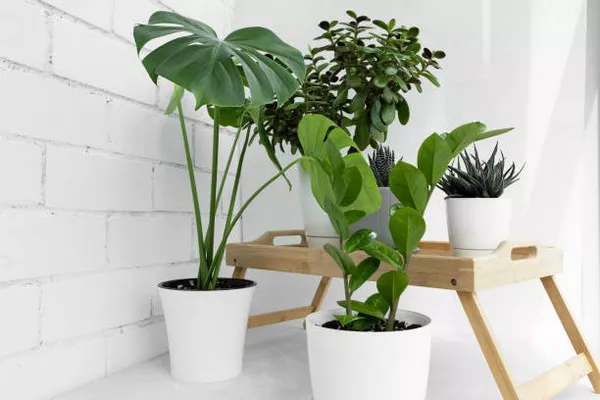In the realm of ornamental plants, few specimens possess the timelessness and enduring charm of the jade plant (Crassula ovata). Renowned for its striking appearance and resilience, the jade plant has captured the fascination of horticultural enthusiasts and casual gardeners alike. However, the question of how long these emerald-hued succulents can truly thrive remains a subject of curiosity. This article delves into the fascinating world of jade plants, exploring the factors contributing to their exceptional longevity and offering insights into how to foster their well-being for generations to come.
Origins and Characteristics
Native to South Africa, the jade plant belongs to the Crassulaceae family and is characterized by its fleshy, oval-shaped leaves that store water, enabling it to withstand periods of drought. Its vibrant green coloration, coupled with the potential to develop a tree-like form over time, makes it an attractive addition to both indoor and outdoor spaces.
A Lifespan Measured in Decades
One of the most intriguing aspects of the jade plant is its extraordinary lifespan. While many indoor plants have relatively short lifespans, often measured in years, jade plants have the capacity to thrive for decades when provided with the appropriate care. Some specimens have even been known to survive for over a century, defying the typical expectations associated with houseplants.
Factors Influencing Longevity
Several factors contribute to the remarkable longevity of jade plants:
1. Succulent Adaptations:
Jade plants’ succulent nature equips them with specialized adaptations that aid in their longevity. The leaves store water, allowing the plant to endure extended periods of drought. This unique trait ensures their survival even in arid conditions.
2. Slow Growth Rate:
Jade plants exhibit a relatively slow growth rate, especially when compared to other houseplants. This deliberate pace of growth contributes to their extended lifespan. Unlike faster-growing plants that exhaust their energy reserves more quickly, jade plants allocate their resources efficiently, enabling them to endure for many years.
3. Resilience:
These plants possess a remarkable resilience, capable of recovering from adverse conditions such as underwatering, overwatering, and even accidental breakages. Their ability to regenerate and adapt contributes significantly to their overall longevity.
4. Adaptable Environmental Requirements:
Jade plants are adaptable when it comes to their environmental requirements. While they thrive in bright, indirect sunlight, they can tolerate lower light conditions, making them suitable for a variety of indoor settings. Their flexibility regarding light and temperature helps them endure changing conditions over time.
5. Pruning and Maintenance:
Regular pruning not only enhances the aesthetic appeal of jade plants but also contributes to their longevity. Removing dead or diseased branches prevents the spread of issues that could potentially shorten the plant’s lifespan.
Cultivating Longevity: Essential Care Guidelines
To ensure that your jade plant thrives and reaches its full potential lifespan, consider the following care guidelines:
Light: While jade plants can tolerate lower light conditions, they flourish in bright, indirect sunlight. Placing them near a south-facing window with filtered light is ideal. Rotate the plant periodically to encourage even growth.
Watering: Watering practices play a crucial role in the health and longevity of jade plants. Allow the soil to dry out between waterings to prevent overwatering, which can lead to root rot. During the growing season (spring and summer), water moderately, and reduce watering in the dormant season (fall and winter).
Soil: Well-draining soil is essential for jade plants. A cactus or succulent potting mix works well, allowing excess moisture to escape and preventing waterlogged roots.
Container and Repotting: Choose a container with drainage holes to prevent water accumulation. Repot young jade plants every 2-3 years to provide ample space for growth. However, older, well-established plants can be repotted less frequently.
Pruning: Regularly trim dead or diseased leaves and branches to maintain the plant’s vitality and aesthetics. Additionally, pruning can prevent the plant from becoming too leggy and unstable.
Temperature: Jade plants prefer average room temperatures. While they can tolerate temperature fluctuations, it’s advisable to avoid exposing them to extremely cold conditions.
Fertilization: During the growing season, fertilize your jade plant with a balanced, diluted fertilizer every 6-8 weeks. Avoid excessive fertilization, as it can lead to excessive growth and weaken the plant’s structure.
Conclusion
In the world of horticulture, the longevity of jade plants stands as a testament to nature’s resilience and adaptability. These emerald wonders, with their fleshy leaves, slow growth rate, and enduring charm, have captivated the hearts of plant enthusiasts for generations. With proper care and attention, a jade plant can grace your living space for decades, perhaps even becoming a cherished heirloom passed down through generations. By understanding the factors that contribute to their remarkable longevity and adhering to sound care practices, you can ensure that your jade plant thrives as an evergreen symbol of nature’s enduring elegance.


